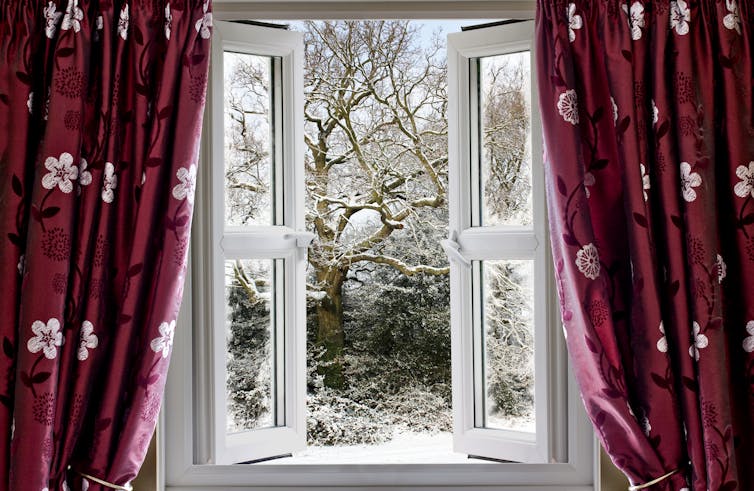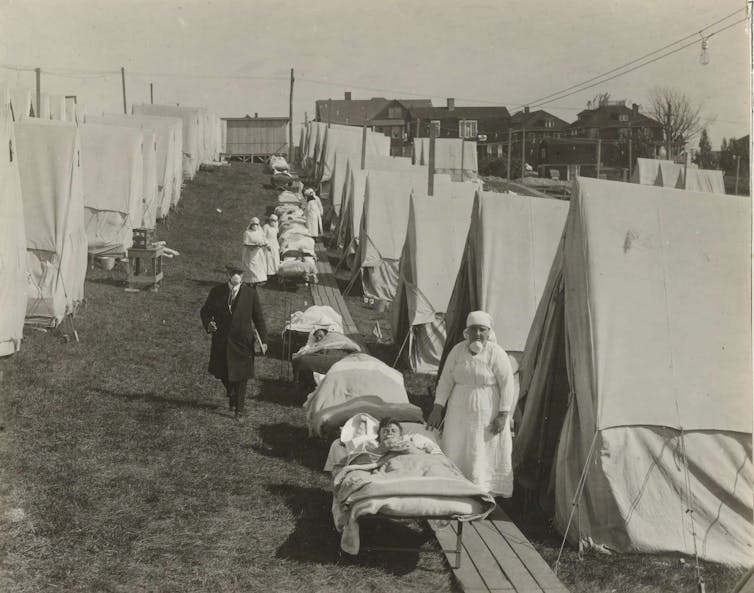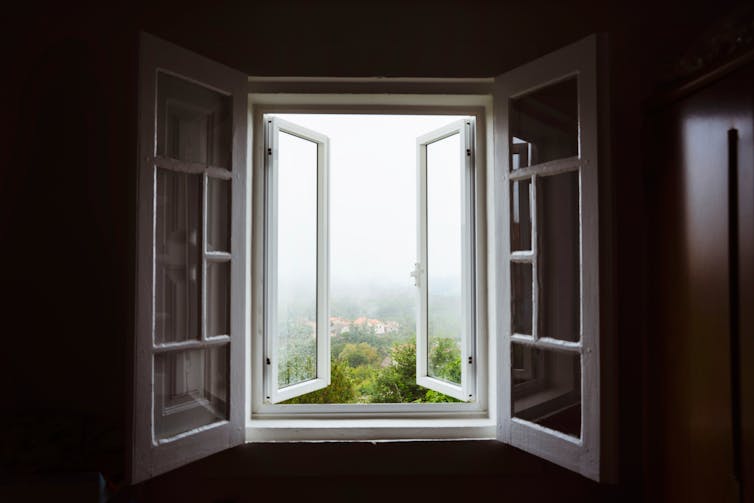COVID-19: itās freezing outside, but you still need to open your windows


In the depths of February, itās not in many of our natures to open the window to let in the cold air of a northern hemisphere winter.
But with the coronavirus pandemic in full swing and new variants on the rise, good ventilation is in an important method to stop the spread of infection in indoor environments. has shown that poorly ventilated indoor areas are among the highest risk venues for spreading the disease.
And although we have known about the importance of ventilation in the fight against COVID-19 for a while, the messaging has not truly taken hold in the UK.
In April 2020, a document presented to the Scientific Advisory Group for Emergencies (Sage) on noted: āThe primary route to controlling exposure to fine aerosol particles in an indoor environment is ventilation.ā
But in that and , guidance was aimed at workplaces and building management systems rather than the general public. With the country now in another lockdown and many people working from home, itās individuals who need to be convinced to open their windows to prevent COVID-19.
The case for ventilation
Over the summer, government guidance on ventilation more geared towards rather than reducing exposure to coronavirus, although it was still a topic of .
In , when people spend longer indoors and ventilation rates are lower, Sage concluded:
Clear messaging and guidelines will be needed to improve understanding on the reasons why good ventilation is important and how to effectively operate ventilation systems or achieve good natural ventilation.
In November, the government launched to show the importance of ventilation as a means to reduce the spread of coronavirus.
The campaign recommended that people open windows fully for short, sharp bursts of ten to 15 minutes regularly throughout the day, or leave them open a small amount continuously. Doing this can reduce the risk of infection from particles by more than 70%.
At the end of last year, a few began to promote āhands, face, space, ventilate and isolateā while others tried āā with āreplaceā referring to changing out stuffy indoor air by opening a window.
Despite these efforts, a found that just 5% of 2,331 people polled had heard about the need to avoid unventilated indoor places. This is perhaps not surprising, given the on COVID did not list opening windows as a means to reduce exposure until January 2021, while the December on reducing the risk of coronavirus transmission in the home only mentions ensuring that indoor spaces get as much fresh air as possible.
Compare all this with Japan, whose government posted advice in March 2020 on avoiding the āā ā closed spaces, close-contact, and crowds. People were recommended to open windows at home for a few minutes twice every hour.
A history of open windows
The importance of opening windows for health reasons is nothing new.
In the second half of the 18th century, there was growing concern over the air in confined spaces causing disease. In his 1769 book, Domestic Medicine and the Family Physician, Scottish doctor and author noted that for many poor people, the ālow dirty habitations are the very lurking-places of bad air and contagious diseaseā.
In 1842, a contributor to the reported:
When great numbers are crowded together in a small confined space, and ventilation is neglected, constitutes ā¦ a very frequent source from whence fever originates.
Two years later, obstetrician recommended in his lectures to the working classes of Edinburgh that people open their windows to purify āthe foul and foetid airā.
In her 1859 book, Notes on Nursing, Florence Nightingale highlighted the importance of open windows in fighting disease. āCleanliness and fresh air from open windows with unremitting attention to the patient are the only defence a true nurse either asks or need,ā .
Such advice was echoed in journalist Mrs Beetonās in 1861. Beeton argued who believed that certain illnesses could become more potent if they were concentrated in confined, poorly ventilated spaces and championed the fireplace as a means of providing much-needed ventilation in the home environment.
In hospitals, the use of open windows to enhance ventilation was used on casualties during the first world war and during the 1918ā19 influenza pandemic, when patientsā beds were even .

A faith in open windows continued in the early 20th century until began to change and the idea that might enter and gain a foothold inside.
But to this day, the still recommends natural ventilation as one way to limit transmission of tuberculosis.
Forgetting the lessons of the past
Do we still follow the practice of opening windows advocated by our Victorian forbears? Walk along virtually any UK street in winter and you would be lucky to see any windows ajar.
In Germany, on the other hand, regular ventilation or , which involves opening a window in the morning and evening for at least five minutes to allow the circulation of air, is a common occurrence.

There is also ±ē³Ü±š°ł±ōĆ¼“Ś³Ł±š²Ō or cross-ventilation, which involves opening all windows. Many rental agreements in Germany often make ²õ³Ł“Ē²õ²õ±ōĆ¼“Ś³Ł±š²Ō a requirement through a legally binding clause, mainly to protect against mould and unpleasant smells.
In cold weather, opening a window can always be a cause of tension. But thatās not new either ā in 1776 lodged together in a small room with only one window and argued over opening the window.
Adams didnāt want to catch an illness from the cold night air. Franklin answered that the air in their room was even worse. In the age of COVID, itās better to be a Franklin than an Adams.![]()
, Emeritus Professor of Environmental Science,
This article is republished from under a Creative Commons license. Read the .



